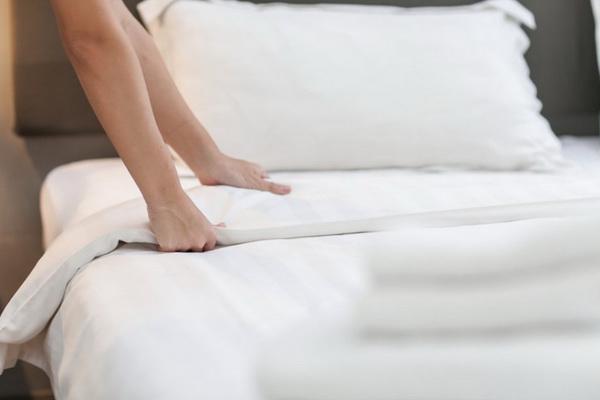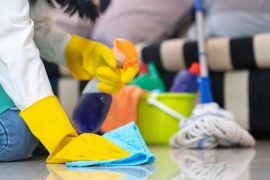For most of us, a bed is a comfortable, warm and cozy place for better relaxation and rest. With our head resting on a pillow and covered with a blanket, we feel that we are separating from external factors that are unfavorable to our skin and body. Meanwhile, not everyone knows that there are even several million microscopic creatures that threaten health in bedding! Not observing the rules of hygiene, we multiply them. What insects’ nest in bedding? How to get rid of them effectively?
Is the bedding clean?
When after a hard day we swim and go to bed, we think that nothing threatens us, we are alone. Unfortunately, this is not so, bedding is also the den of unwanted residents, invisible to the naked eye. These are parasites that find favorable conditions on our quilts, pillows and mattresses. The question may arise, where do they come from if we go to bed clean and use bedding only at night. So it should be clean.
This is a very wrong impression, microorganisms constantly revolve around us, so we often wash, wash and change clothes. We must do the same with bedding. Insects live almost everywhere, in dust, in the upholstery of furniture, curtains, rugs, blankets, our bodies, and therefore on blankets and pillows. Although we only rest in bed, we still produce sweat. Especially when the room temperature is too high, we sleep in faux pajamas, or we have a cold. High temperature and humidity are ideal conditions for parasites. In addition, they feed on our epidermis, which constantly flakes and settles on bedding.
What is hidden in bedding?
Ticks
These are dust mites in our board mission. When we don’t care about bedding, they can breed up to 2 million of these tiny arachnids. Our exfoliated epidermis is an excellent nutrient for them. Their litter is highly allergenic; it can cause a runny nose, conjunctivitis, sinusitis, acne, skin allergies, and even asthma.
Bacteria
Bedding is also a habitat for a variety of bacteria, including colonial bacilli (E. Cold) and gram-negative bacilli (including the Salmonella family). These germs lead to various painful conditions, such as an upset stomach, infections, and difficult to heal cuts. Bacteria can also cause allergies and eczema on the skin. Every third bacterium in our bedding gets there from our body, for example from our mouth, skin, or armpits.
Mushrooms
In addition to bacteria and ticks, uninvited guests in bedding are mold fungi. These are mainly Aspergillus, who are loved in warm and humid places without air. They accumulate in non-ventilated bedding and mattresses on a sturdy slab frame or in small holes. They are dangerous to health, cause foot and lung fungal infections, allergies, infections and bronchial asthma.
Bed bugs
Sometimes bedbugs can be found even in bedding! They protect ourselves from the cold in our beds when we don’t vacuum the mattress or change the bedding too often. They feed on human blood; their bites leave small, very itchy wounds on our skin. In one night, they can bite a person even several hundred times.
How to get rid of insects in bedding?
What can you do to get rid of all these insects? The most important step is the frequent washing and changing of bed linen. Microorganisms multiply at a fast pace, so duvet covers and pillowcases should be washed once a week or at least every 2 weeks. Parasites die at very high temperatures, so it is recommended to wash bedding at a temperature of 60 degrees Celsius.
Blankets and pillows should be placed in the washing machine at least once every 6 months and often ventilated outdoors. Do not dry them in the sun, because heat and humidity contribute to the growth of bacteria. Pillows should be replaced after two years, and the blanket after five.
It is worth putting on microfiber bedding, which prevents the penetration of ticks and their droppings. Quilts and pillows are made of dustproof, antibacterial and breathable fabrics.
In addition, you must take care of the order in the bedroom, often collect dust, wash furniture and floors, and ventilate the room. It is also worth getting rid of unnecessary items that only collect dust, and often vacuum carpets, beds and mattresses.








